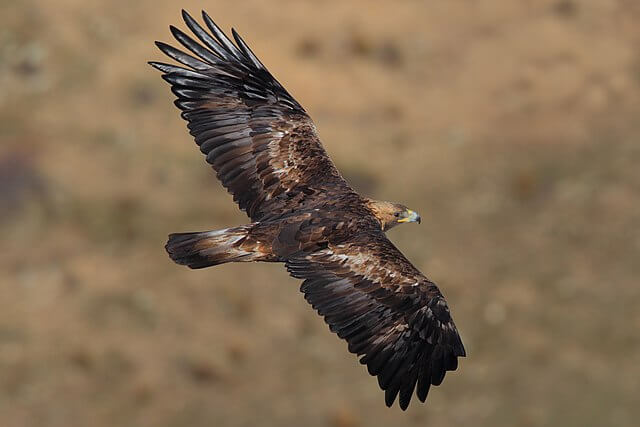
The recent disappearance of a golden eagle in the Borders is a setback for ongoing efforts to enhance the population of these majestic birds in southern Scotland.
The South of Scotland Golden Eagle Project (SSGEP) has been actively working for the past five years to increase golden eagle numbers in the region, with a base near Moffat serving as the project’s focal point.
Situated between Heriot and Stow, the latest incident involving a missing golden eagle is being treated as suspicious by the police. Authorities have expressed their commitment to safeguarding these “magnificent birds” and are actively investigating the circumstances surrounding the disappearance.
The SSGEP, initiated more than a decade ago, released its first chicks in August 2018, marking a significant milestone in the project’s journey.
Cat Barlow, project manager, described it as a “very significant” moment.
“We are trying to boost the dwindling population and make sure that we are seeing a bird that should be here in the skies of the south of Scotland,” she said.
The birds were transported from the Highlands to a secret location in the Moffat Hills, with the aim of bolstering the local population. At the project’s inception, there were between two and four breeding pairs in southern Scotland.
Despite early setbacks, including an incident where one bird attacked and caused the death of another, the project remained resilient. NatureScot, Scotland’s natural heritage agency, deemed the incident distressing and unprecedented but continued to support the project’s goals.
The loss of a young golden eagle prompted the introduction of additional birds from the Highlands, resulting in a total of 12 successfully relocated chicks by August 2021.
While the project faced delays due to the COVID-19 pandemic, it celebrated a noteworthy achievement in 2023 when the golden eagle population in southern Scotland reached nearly 50, the highest recorded level in centuries.
The project said it was “absolutely amazing” to see so many birds “soaring majestically” across south of Scotland skies.
The success extended beyond introducing chicks, as the SSGEP became the first scheme in the UK to relocate older golden eagles aged between six months and three years from one region to another.
The project garnered significant community involvement through various initiatives, and a golden eagle festival in Moffat further highlighted public engagement.
Environmental concerns also influenced decision-making, as plans for a wind farm near Moffat were scaled back to address potential impacts on golden eagles. The initial proposal for 75 turbines at Scoop Hill was reduced to 60 following consultations and objections from organizations like the RSPB.
An incident in February of the previous year, where a golden eagle named Sula was found dead on a south of Scotland estate, triggered investigations into potential poisoning or avian flu. These concerns were ruled out, and the project emphasised that the sudden death of birds, including from natural causes, is part of the species’ behaviour.
The SSGEP highlighted a high survival rate in southern Scotland, expressing optimism for the future.
Despite these successes, the recent disappearance of Merrick, a female golden eagle, has raised concerns. Last seen in October between Heriot and Stow, police suspect foul play and are actively investigating.
The setback, while disheartening, has not deterred the commitment of the golden eagle project and its partner organisations to continue their efforts in boosting the local golden eagle population in southern Scotland.
The disappearance underscores the challenges faced in conservation efforts and the need for ongoing vigilance and support.

